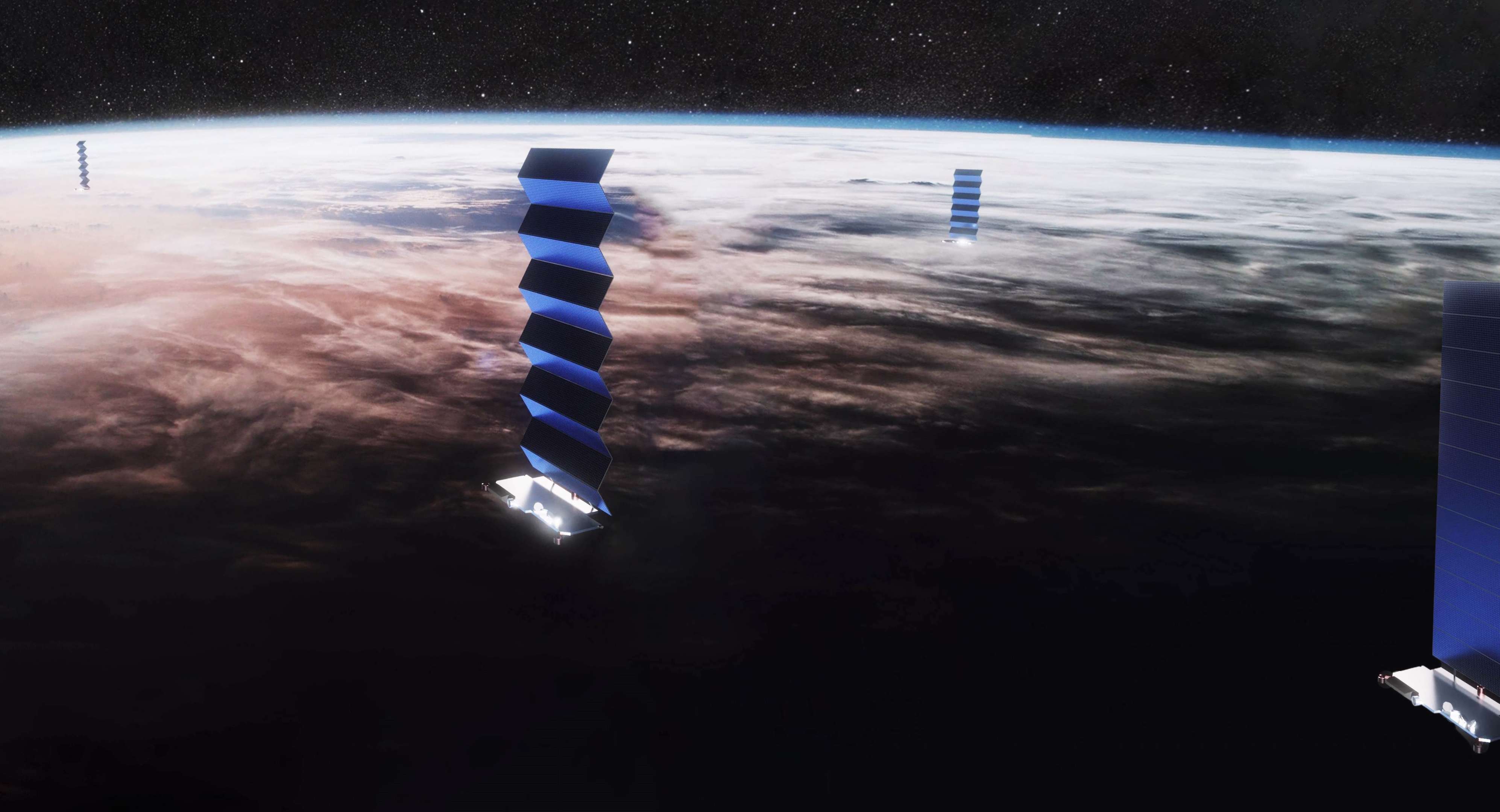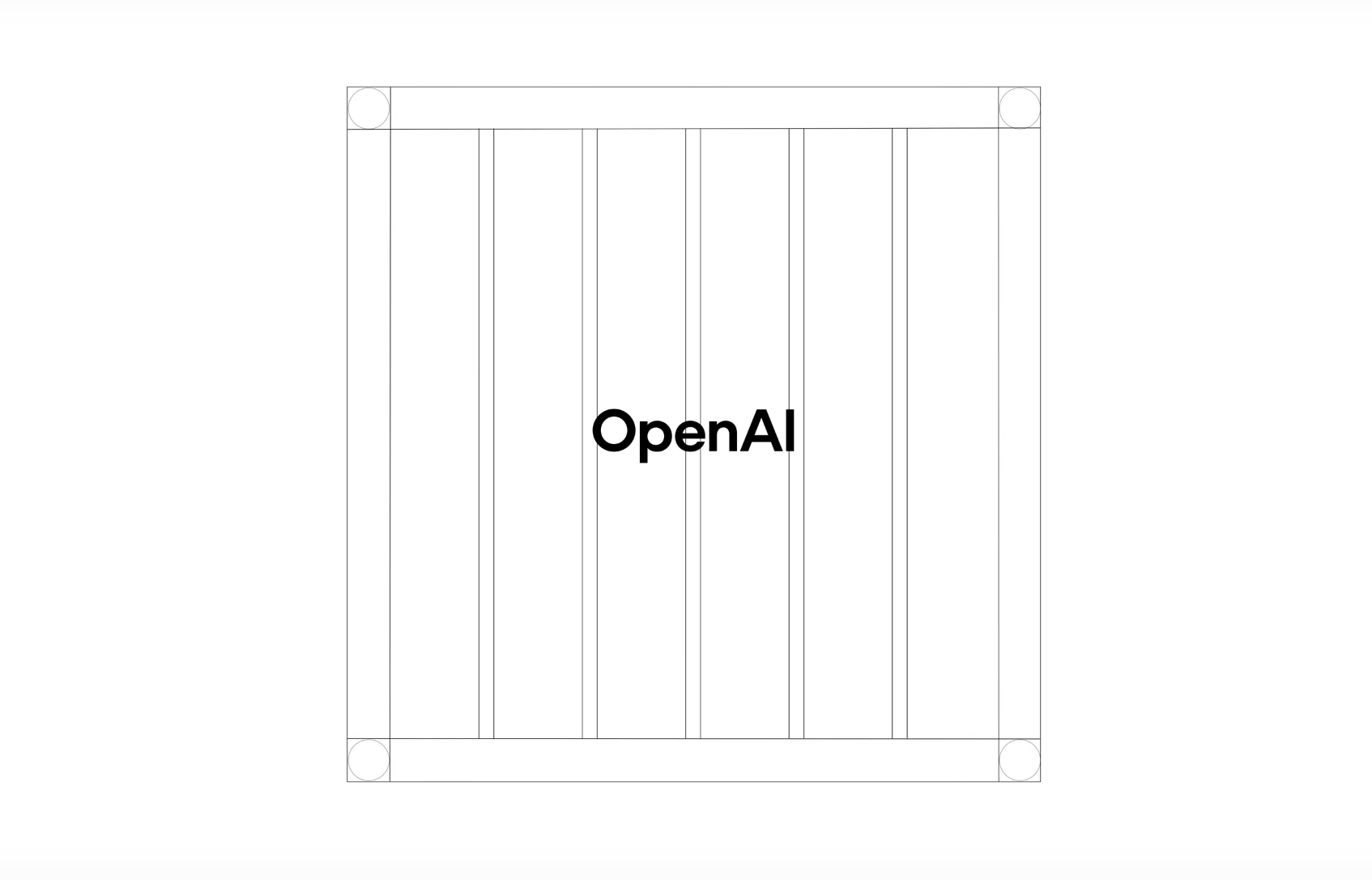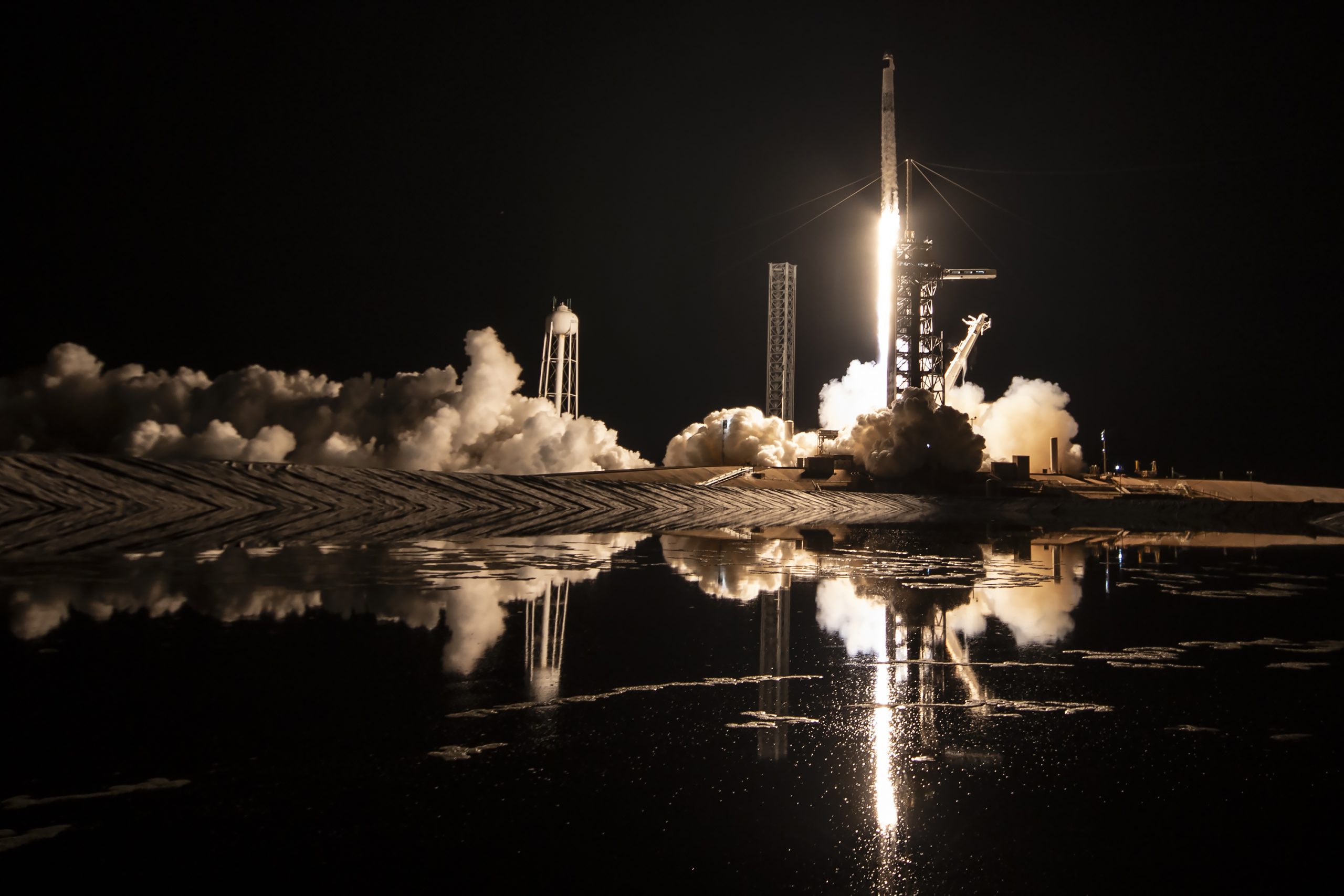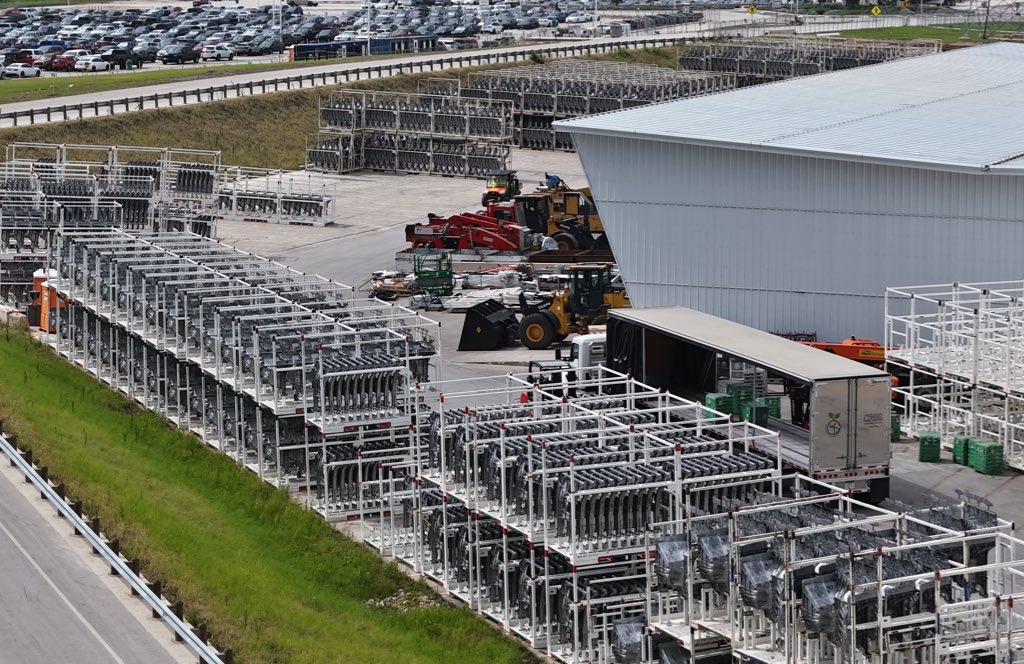

News
SpaceX’s Starlink satellites spark fights between astronomy, spaceflight fans
Just a handful of hours after SpaceX successfully placed all 60 of its first Starlink v0.9 satellites in orbit, ground observers began capturing and sharing spectacular nighttime views of the spacecraft. Soon after, fans and practitioners of astronomy and spaceflight began bickering.
The topic of concern: light pollution, not from lights on the ground but from sunlight-reflecting satellites in orbit. Immediately after launch, the ‘train’ of 60 Starlink satellites were undeniably spectacular, easily visible to the eye and as bright or brighter than the brightest stars in the sky. For the most part, reactions seemed to lean more towards awe than concern, but it didn’t take long for people to begin extrapolating from 60 satellites to Starlink’s peak of ~11,900 (an increase of 200X), and some responses began to paint SpaceX’s constellation in a more negative light.
Fans, communicators, and practitioners of astronomy quickly grew into the loudest voice in the room, as fans of SpaceX and Elon Musk started to engage, ultimately making it clear that low Earth orbit (LEO) megaconstellations could soon become a highly controversial topic for unexpected reasons. As is typical of humans in the age of social media, the gentlest hint of controversy and criticism swelled into stone-throwing between two crystallized sides unwilling to breathe and engage in civil debate.
Meanwhile, barely 24-48 hours had elapsed since the first Starlink satellite reached orbit – not their final orbit (550 km) but an insertion orbit at ~450 km. Almost immediately, serious observers noted that the Starlink satellites were rapidly spreading out and dimming as they got to work raising their orbits with onboard ion thrusters. Situated in an urban area, Teslarati photographer Tom Cross described the Starlink ‘train’ as “way too faint to capture” on the evening of May 25th, although they were still subtly visible to the naked eye.
From a practical perspective, it should come as little to no surprise that Starlink satellites are visible – even highly visible – from the ground, particularly in areas with minimal light pollution. SpaceX’s flat-panel design and the location of their antennas means that each satellite will have a metallic, shiny surface constantly facing towards the ground, perfect for reflecting sunlight. Additionally, every satellite has a fairly large solar array, likely measuring about 3m by 12m (10ft by 40 ft). Combined, the 60 satellites have a collective solar array area of more than 2000 square meters (21,500 ft^2), nearly the same size as the International Space Station’s football field-sized arrays.

Here’s a 30 second long exposure of #starlink satellites marching across the sky. I saw them, framed this up, and started it as quickly as I could so there is zero creativity or planning here but I GOT THEM! Aghhhh. @elonmusk — you seen your satellites overhead yet? pic.twitter.com/91KzFKOUq1— ?Trevor Mahlmann (@TrevorMahlmann) May 25, 2019
An astronomical disruption?
However, the visibility of SpaceX’s Starlink satellites for laypeople was never the most contentious concern or a leader of vitriolic responses. Rather, even if the ~12,000 proposed Starlink satellites are minimally visible to the naked eye, they will almost certainly still appear in the sort of long-exposure images used by astronomers to catalog, track, and better understand the universe. This is a reasonable concern and one that should come as little to no surprise, given that astronomy already deals with the thousands of operational and defunct satellites, rocket upper stages, and pieces of large space debris already in Earth orbit.
The problem with giant LEO constellations is that satellites in LEO can appear far brighter and far larger than the traditional geostationary satellites used to provide communications services. This is a critical benefit for the spacecraft, as geostationary distances (~36,000 km, 22,000 mi) create major latency (lag) problems for communications networks.
Will Starlink (alongside other constellations from Telesat, OneWeb, and LeoSat) destroy the night sky as we know it, ruining the perfectly untouched cosmos for the rest of eternity? Will Starlink immediately create a global utopia by affordably connecting every single human on Earth to the internet, all while being completely invisible and undetectable from the ground? No, no, no, and no. As with 99.99% of things, the reality will fall somewhere in the middle and its consequences and benefits will be far more grey than black and white.
Update: Elon Musk addresses the controversy over Starlink light pollution
As more levelheaded spaceflight fans and astronomers thankfully point out, we need to wait weeks – if not months or even years – to actually understand the potential impact LEO mega-constellations might have on science and society. It would likely be beneficial for SpaceX – thus far silent – to open a dialogue with those concerned about those potential impacts. It would also serve astronomy well to find ways to cope with space-based infrastructure meant to eventually benefit tens of millions to billions of people, ranging from astronomers themselves to underprivileged members of developing societies. To accept tradeoffs and make compromises is to be human.

Check out Teslarati’s Marketplace! We offer Tesla accessories, including for the Tesla Cybertruck and Tesla Model 3.
News
These Tesla, X, and xAI engineers were just poached by OpenAI
The news is the latest in an ongoing feud between Elon Musk and the Sam Altman-run firm OpenAI.

OpenAI, the xAI competitor for which Elon Musk previously served as a boardmember and helped to co-found, has reportedly poached high-level engineers from Tesla, along with others from xAI, X, and still others.
On Tuesday, Wired reported that OpenAI hired four high-level engineers from Tesla, xAI, and X, as seen in an internal Slack message sent by co-founder Greg Brockman. The engineers include Tesla Vice President of Software Engineering David Lau, X and xAI’s head of infrastructure engineering Uday Ruddarraju, and fellow xAI infrastructure engineer Mike Dalton. The hiring spree also included Angela Fan, an AI researcher from Meta.
“We’re excited to welcome these new members to our scaling team,” said Hannah Wong, an OpenAI spokesperson. “Our approach is to continue building and bringing together world-class infrastructure, research, and product teams to accelerate our mission and deliver the benefits of AI to hundreds of millions of people.”
Lau has been in his position as Tesla’s VP of Software Engineering since 2017, after previously working for the company’s firmware, platforms, and system integration divisions.
“It has become incredibly clear to me that accelerating progress towards safe, well-aligned artificial general intelligence is the most rewarding mission I could imagine for the next chapter of my career,” Lau said in a statement to Wired.
🚨Optimistic projections point to xAI possibly attaining profitability by 2027, according to Bloomberg's sources.
If accurate, this would be quite a feat for xAI. OpenAI, its biggest rival, is still looking at 2029 as the year it could become cash flow positive.💰 https://t.co/pE5Z9daez8
— TESLARATI (@Teslarati) June 18, 2025
READ MORE ON OPENAI: Elon Musk’s OpenAI lawsuit clears hurdle as trial looms
At xAI, Ruddarraju and Dalton both played a large role in developing the Colossus supercomputer, which is comprised of over 200,000 GPUs. One of the major ongoing projects at OpenAI is the company’s Stargate program,
“Infrastructure is where research meets reality, and OpenAI has already demonstrated this successfully,” Ruddarraju told Wired in another statement. “Stargate, in particular, is an infrastructure moonshot that perfectly matches the ambitious, systems-level challenges I love taking on.”
Elon Musk is currently in the process of suing OpenAI for shifting toward a for-profit model, as well as for accepting an investment of billions of dollars from Microsoft. OpenAI retaliated with a counterlawsuit, in which it alleges that Musk is interfering with the company’s business and engaging in unfair competition practices.
Elon Musk confirms Grok 4 launch on July 9 with livestream event
News
SpaceX share sale expected to back $400 billion valuation
The new SpaceX valuation would represent yet another record-high as far as privately-held companies in the U.S. go.

A new report this week suggests that Elon Musk-led rocket company SpaceX is considering an insider share sale that would value the company at $400 billion.
SpaceX is set to launch a primary fundraising round and sell a small number of new shares to investors, according to the report from Bloomberg, which cited people familiar with the matter who asked to remain anonymous due to the information not yet being public. Additionally, the company would sell shares from employees and early investors in a follow-up round, while the primary round would determine the price for the secondary round.
The valuation would represent the largest in history from a privately-owned company in the U.S., surpassing SpaceX’s previous record of $350 billion after a share buyback in December. Rivaling company valuations include ByteDance, the parent company of TikTok, as well as OpenAI.
Bloomberg went on to say that a SpaceX representative didn’t respond to a request for comment at the time of publishing. The publication also notes that the details of such a deal could still change, especially depending on interest from the insider sellers and share buyers.
Axiom’s Ax-4 astronauts arriving to the ISS! https://t.co/WQtTODaYfj
— TESLARATI (@Teslarati) June 26, 2025
READ MORE ON SPACEX: SpaceX to decommission Dragon spacecraft in response to Pres. Trump war of words with Elon Musk
SpaceX’s valuation comes from a few different key factors, especially including the continued expansion of the company’s Starlink satellite internet company. According to the report, Starlink accounts for over half of the company’s yearly revenue. Meanwhile, the company produced its 10 millionth Starlink kit last month.
The company also continues to develop its Starship reusable rocket program, despite the company experiencing an explosion of the rocket on the test stand in Texas last month.
The company has also launched payloads for a number of companies and government contracts. In recent weeks, SpaceX launched Axiom’s Ax-4 mission, sending four astronauts to the International Space Station (ISS) for a 14-day stay to work on around 60 scientific experiments. The mission was launched using the SpaceX Falcon 9 rocket and a new Crew Dragon capsule, while the research is expected to span a range of fields including biology, material and physical sciences, and demonstrations of specialized technology.
News
Tesla Giga Texas continues to pile up with Cybercab castings
Tesla sure is gathering a lot of Cybercab components around the Giga Texas complex.

Tesla may be extremely tight-lipped about the new affordable models that it was expected to start producing in the first half of the year, but the company sure is gathering a lot of Cybercab castings around the Giga Texas complex. This is, at least, as per recent images taken of the facility.
Cybercab castings galore
As per longtime drone operator Joe Tegtmeyer, who has been chronicling the developments around the Giga Texas complex for several years now, the electric vehicle maker seems to be gathering hundreds of Cybercab castings around the factory.
Based on observations from industry watchers, the drone operator appears to have captured images of about 180 front and 180 rear Cybercab castings in his recent photos.
Considering the number of castings that were spotted around Giga Texas, it would appear that Tesla may indeed be preparing for the vehicle’s start of trial production sometime later this year. Interestingly enough, large numbers of Cybercab castings have been spotted around the Giga Texas complex in the past few months.
Cybercab production
The Cybercab is expected to be Tesla’s first vehicle that will adopt the company’s “unboxed” process. As per Tesla’s previous update letters, volume production of the Cybercab should start in 2026. So far, prototypes of the Cybercab have been spotted testing around Giga Texas, and expectations are high that the vehicle’s initial trial production should start this year.
With the start of Tesla’s dedicated Robotaxi service around Austin, it might only be a matter of time before the Cybercab starts being tested on public roads as well. When this happens, it would be very difficult to deny the fact that Tesla really does have a safe, working autonomous driving system, and it has the perfect vehicle for it, too.
-

 Elon Musk1 week ago
Elon Musk1 week agoTesla investors will be shocked by Jim Cramer’s latest assessment
-

 News2 weeks ago
News2 weeks agoTesla Robotaxi’s biggest challenge seems to be this one thing
-

 Elon Musk1 day ago
Elon Musk1 day agoElon Musk confirms Grok 4 launch on July 9 with livestream event
-

 News2 weeks ago
News2 weeks agoWatch the first true Tesla Robotaxi intervention by safety monitor
-

 News5 days ago
News5 days agoTesla Model 3 ranks as the safest new car in Europe for 2025, per Euro NCAP tests
-

 Elon Musk2 weeks ago
Elon Musk2 weeks agoA Tesla just delivered itself to a customer autonomously, Elon Musk confirms
-

 Elon Musk2 weeks ago
Elon Musk2 weeks agoElon Musk confirms Tesla Optimus V3 already uses Grok voice AI
-

 Elon Musk2 weeks ago
Elon Musk2 weeks agoxAI welcomes Memphis pollution results, environmental groups push back

















